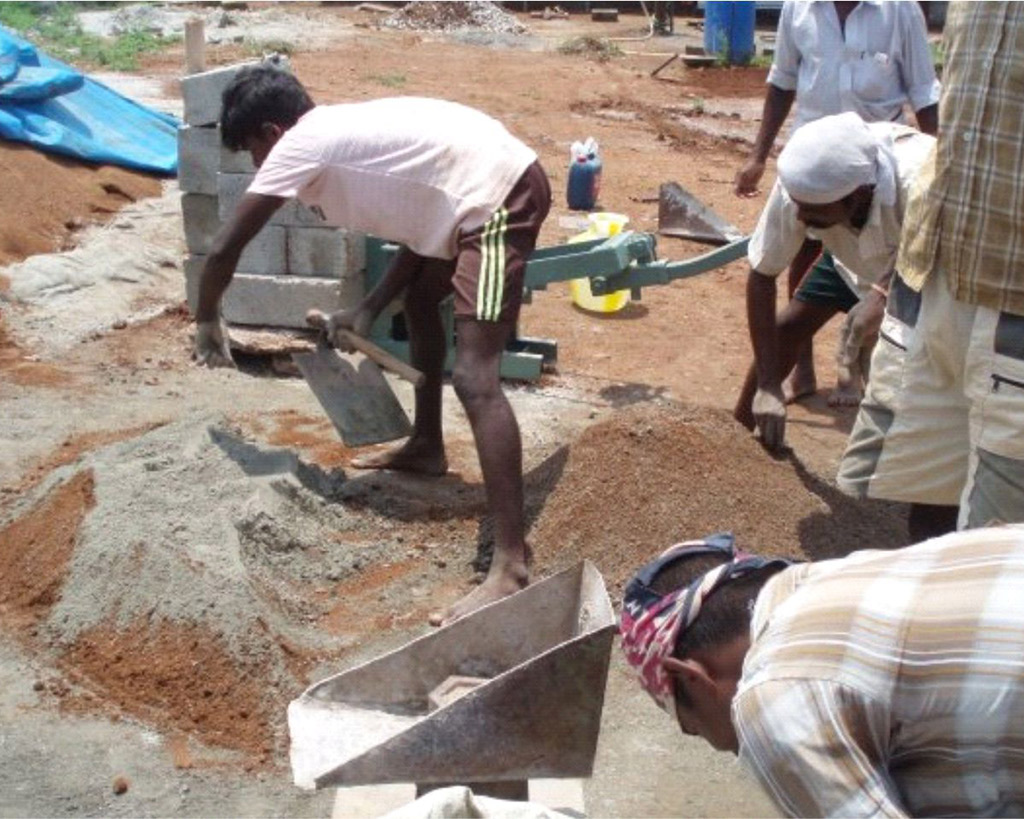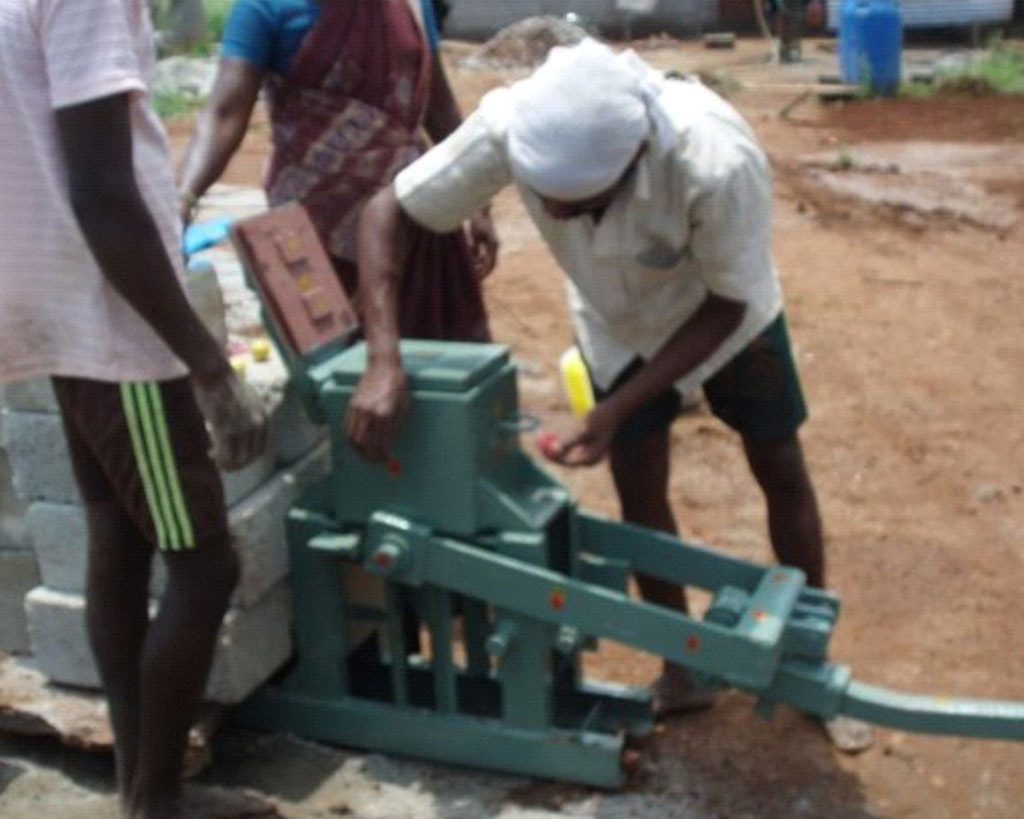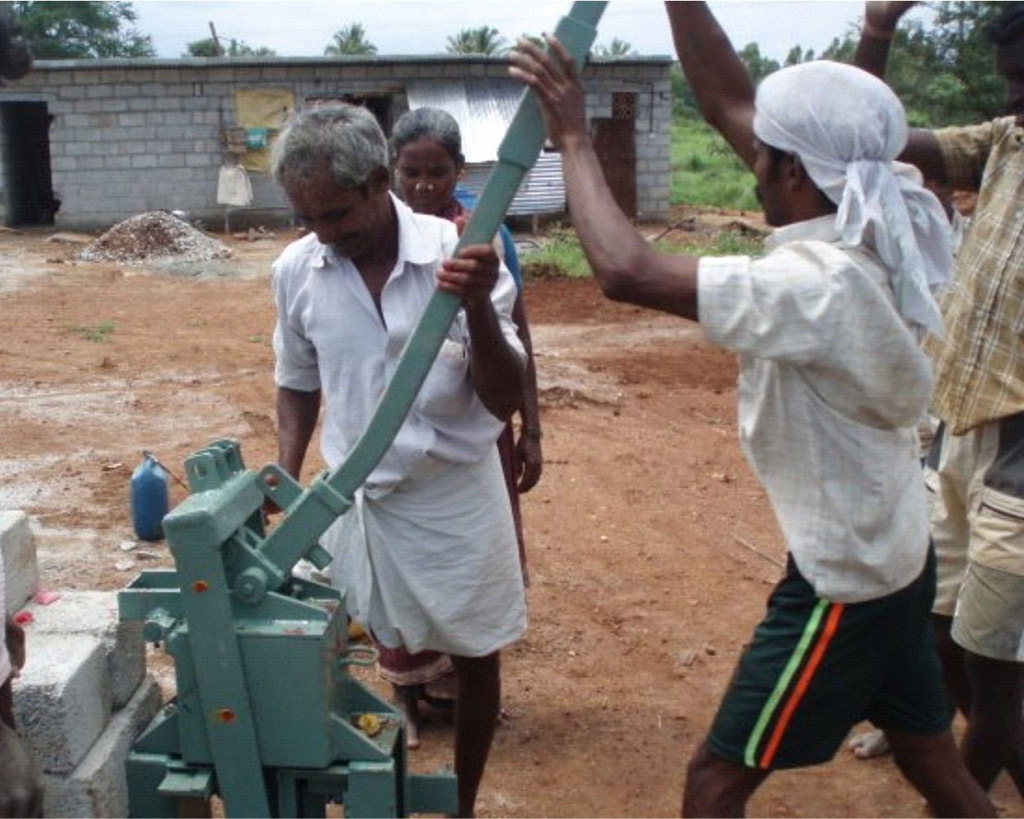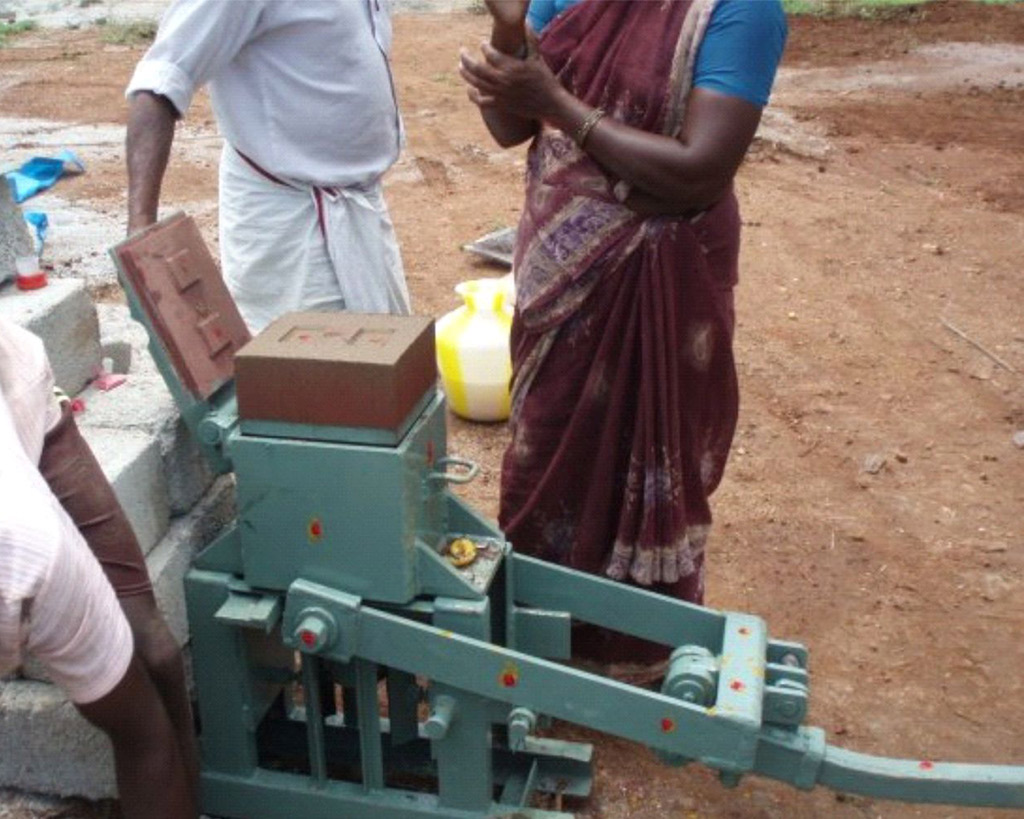The Stabilised Mud Block

The most amazing thing about building with stabilized mud blocks has been the awareness that the building is built from the very soil that it is sited on, almost as if it has grown out of the earth.
The Compressed Stabilized Earth Block is formed from a mix of mud, sand and cement using a manual machine operated by an individual. In practice, we found that the ability to monitor quality of production as well as logistics on site made it easily scalable for extensive use.
Experimenting with additives for better colour and strength was like an exercise in baking; the correct ingredients in the right combination were needed for the desired results.
PARAMETERS WE WORKED WITH TO DEVELOP THE CSEB TO OUR CONTEXT AND REQUIREMENT.
We used manufactured sand instead of river sand, as river sand is a depleting material. This made our standard brick a greyish colour, instead of the warm mud that was also present in it. We then made a concerted effort to identify a mix which would result in a visually appealing block which could be used in exposed masonry work. Achieving a pleasing colour and appearance was important to us, even as other properties of the brick remained the same, in order to add to our palette of materials. Visual appeal is an important factor if one wishes to inspire mainstream development. The economical, durable and ecological qualities of the solution must come with the aesthetic ability to appeal to a wider audience.
We worked to ensure that the costs were comparable to any mainstream material of the same strength, like concrete blocks, to demonstrate that mud blocks are an extremely viable material in the building industry, and can make a major impact on the environment.
To achieve a balance between the cost, the availability of skilled masons, and the aesthetics, we arrived at a combination of plastering some of the block walls and exposing the “coloured” ones.
The architectural detailing was used to protect the walls, using adequate overhangs against the elements. The exposed walls needed a coat of transparent silicon to prevent erosion over the years.




MANUFACTURE
Mud blocks are composed of Soil, Sand (M sand), Cement, Mettur mud and Surkhi. Mettur, a by-product from the manufacture of aluminium, is the ingredient which gives the deep red colour to our exposed blocks. Here cement is the main stabilizing/binding agent which prevents the mud from softening by action of water. With this mix the soil is subjected to adequate pressure with a suitable moisture content. This compaction is done inside a mould to produce the required size of mud block. The mix is prepared in such a way that the cement content is always 50% of clay content and clay is never beyond 15%.
Mix
A regular block of 230 X 204 X 90 (mm) has the following composition by weight. Note: 100 kg is the reference weight.
Cement 9%
Soil and sand (dust or m sand in this case) ratio of 1:1
Mettur 10%
Surkhi 5%
Water 8 to 10%
With this mix we are able to get a dry density of 1.9 to 2.05 g/cc after compaction, and a compressive strength of 8 to 10 Mpa. When compared to an energy intensive technique like brick burning where the country block strengths are seen only up to 3 Mpa, this is significant.
The Machine
The stabilization is done in a Mardini press developed by ASTRA, Indian Institute of Science. It has a frame, an interchangeable mould, a reverse toggle lever, scoops, bottom plates and other accessories.
The Process
The process of creating a CSEB involves preparing the soil by sieving and removing large impurities, preparing the mix by adding sand and cement, moisturising the mix by adding water, scooping a specific weighed quantity of the mix into the machine, compaction, ejection, stacking and curing.
GoodEarth has two teams which can produce around 1500 blocks a day, working for about 10-12 hours. Each team has about 5 to 7 people including the team leader. In the ten years since we began Malhar, we have produced over 60,00,000 blocks.